

Can You Visit Maze Prison
Table of Contents
Have you ever wondered if it is possible to visit the infamous Maze Prison? The answer is both yes and no. While the actual prison has been closed and transformed into a museum, visitors now have the opportunity to explore its history and gain insights into the troubled past of Northern Ireland. In this article, we will delve into the background of Maze Prison, its significance, and what it offers to visitors today.
Introduction
Maze Prison, also known as Long Kesh, was a high-security prison located near Lisburn, Northern Ireland. Its history is closely intertwined with the turbulent era known as “The Troubles,” which spanned from the late 1960s to the Good Friday Agreement in 1998. The prison served as a significant symbol of the conflict, housing both republican and loyalist prisoners.
What is Maze Prison
Maze Prison was originally constructed in the early 1970s as a maximum-security facility designed to house paramilitary prisoners involved in the Northern Ireland conflict. It consisted of eight H-shaped cell blocks, known as H-Blocks, each with individual cells surrounding a central enclosed area.
Historical Background
To understand the significance of Maze Prison, it is crucial to grasp the historical context of Northern Ireland during The Troubles. The region experienced political and sectarian violence, with tensions between nationalist Catholics and unionist Protestants. The conflict resulted in a series of bombings, shootings, and acts of terrorism, leading to the loss of numerous lives and a deep division within society.
The Troubles in Northern Ireland
The Troubles emerged as a complex conflict driven by political, social, and religious factors. It pitted different factions against each other, with paramilitary organizations such as the Irish Republican Army (IRA) and the Ulster Volunteer Force (UVF) playing prominent roles. The violence escalated, and the prison system became a battleground reflecting the deep-rooted divisions within Northern Ireland.
Construction and Design of Maze Prison
Maze Prison was intentionally designed to exert control over the incarcerated individuals. The H-Blocks were built to isolate prisoners from one another, preventing communication and minimizing the potential for organizing protests or escapes. This architectural strategy aimed to break down the collective strength of the paramilitary organizations.
Life Inside Maze Prison
Prison life within Maze was harsh and oppressive. Republican and loyalist prisoners were segregated, and they had to endure extended periods of confinement. The conditions were often challenging, with reports of protests, hunger strikes, and alleged mistreatment by prison staff. The stories of the prisoners and their experiences within Maze Prison are an essential part of its history.
Notable Prisoners
Over the years, Maze Prison housed several high-profile prisoners, including prominent figures from both sides of the conflict. Bobby Sands, an IRA member, became an international symbol of the hunger strikes that took place in the early 1980s. His death and the subsequent protests captured global attention and further heightened tensions in Northern Ireland.
Escapes and Protests
Despite the prison’s strict security measures, there were notable escapes and protests that captured public attention. One of the most famous incidents was the mass escape in 1983 when 38 prisoners broke free, leading to a nationwide manhunt. These events became emblematic of the resilience and determination of the paramilitary prisoners.
Closure and Legacy
Maze Prison was closed in 2000 as part of the peace process in Northern Ireland. The site underwent a transformation, and today, it stands as an important landmark and museum, known as the “Maze Prison: The H-Block Experience.” The objective of the museum is to provide visitors with an immersive and educational experience, shedding light on the prison’s history and the broader context of The Troubles.
Visiting Maze Prison
As a visitor, you can now explore the Maze Prison site and learn about the struggles, sacrifices, and impact of The Troubles. The museum offers guided tours, exhibits, and interactive displays that bring the history to life. It provides a unique opportunity to gain insights into the political and social dynamics that shaped Northern Ireland.
Guidelines for Visitors
When planning a visit to Maze Prison, it is important to familiarize yourself with the guidelines and regulations set by the museum. These guidelines ensure that visitors respect the historical significance of the site and maintain a respectful environment for all. They also contribute to preserving the authenticity of the exhibits and the stories they convey.
The H-Block Experience
The centerpiece of the museum is the reconstructed H-Block section, which allows visitors to step into the shoes of both prisoners and prison staff. The realistic depiction provides a glimpse into the challenging conditions and the impact they had on the lives of those confined within Maze Prison.
Impact on Northern Ireland’s History
The closure of Maze Prison marked a significant milestone in the peace process in Northern Ireland. The transformation of the site into a museum serves as a reminder of the progress made in the region and the importance of understanding the past to build a more harmonious future.
The history of Maze Prison is deeply intertwined with the troubled era of Northern Ireland’s past. While you can no longer visit the actual prison, the museum dedicated to the H-Block Experience offers a unique opportunity to learn about the complex dynamics of The Troubles and the resilience of those involved. By understanding the past, we can strive for a peaceful future.
Q1: Can I visit the actual Maze Prison today?
No, the actual Maze Prison has been closed and transformed into a museum known as the “Maze Prison: The H-Block Experience.”
Q2: Are guided tours available at the museum?
Yes, the museum offers guided tours to provide visitors with a comprehensive understanding of the prison’s history.
Q3: Is there an age restriction for visiting the museum?
No, there is no specific age restriction. However, some content may be more suitable for mature audiences.
Q4: Can I take photographs inside the museum?
Photography is generally permitted within the museum, but it is always advisable to check with the staff regarding any specific restrictions.
Q5: How long does a typical visit to the museum take?
The duration of a visit can vary depending on individual interests, but most visitors spend around two to three hours exploring the exhibits and taking part in guided tours.
Similar Posts

Felicity Huffman Jail
Felicity Huffman Jail Introduction In recent years, the name Felicity Huffman has become synonymous with a…
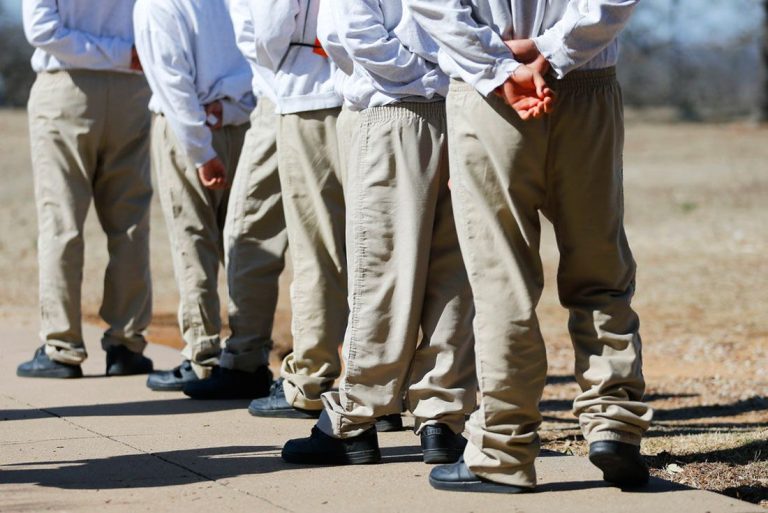
Can You Wear Jordans In Prison
Can You Wear Jordans In Prison H2: Introduction “Have you ever wondered about the dress code…

What Are Holidays Like in Prison
What Are Holidays Like in Prison Introduction Prisons are usually not the first place that comes…

Can You Claim Someone in Prison on Your Taxes
Can You Claim Someone in Prison on Your Taxes Introduction Tax season often brings up a…
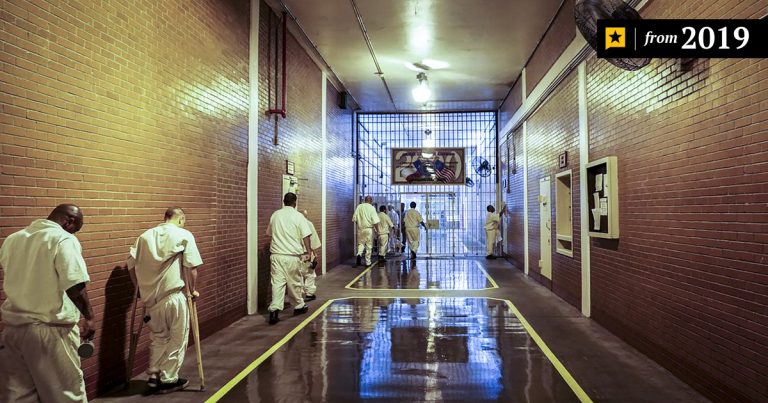
What Happens If You Have a Stroke in Prison
What Happens If You Have a Stroke in Prison Having a stroke is a terrifying experience…

Can You Get a Degree in Prison
Can You Get a Degree in Prison Prisons are often associated with punishment and confinement, but…

Maze Long Kesh
A site coming to life
With every passing year the Maze Long Kesh site is slowly coming to life.
The Balmoral Show
The RUAS Show is the largest show of its kind in NI.
Ulster Aviation Society
A unique array of historic aircraft and exhibits celebrating Northern Ireland’s aviation heritage.
Maze Long Kesh is a unique, iconic and strategically well located 347 acre location with the potential to become the catalyst for a wider, 1000 acre development.
The site has a compelling and varied history, initially as a World War II airfield and then a military camp, detention centre and prison. The Maze Long Kesh story is unique and has been articulated in the Corporation brand statement “From Conflict to Peace. From Peace to Prosperity.” A site once associated with conflict has the potential to become a transformational project of international significance.
Maze Long Kesh Development Corporation, which has the statutory responsibility to secure the regeneration of the site, believes that Maze Long Kesh has the potential to generate 5,000 jobs, deliver more than £300m investment and become a global ‘best in class’ project with social and economic regeneration at its core thereby bringing tangible benefits to all. .
As one of the most exciting destinations of its kind the location has true potential to become a shared space that is welcoming and accessible to all, contributing to peace building and reconciliation. The public interest in Maze Long Kesh is undeniable. Since 2012 around 450,000 people have passed through its gates for a range of events and tours.
Development of the site is currently subject to Ministerial agreement on the way forward.
Key Contacts
Development Corporation
Halftown Road
Lisburn, BT27 5RF
+44 (0)28 9250 1806
18002 02892 501824
Register for our newsletter
Watch our Youtube Channel
View our Photos on Flickr
Opportunity
General information, publications, accessibility.

- Republic of Ireland
- Northern Ireland
- The Titanic
- Wild Atlantic Way
- Abbeys and monasteries
- Distilleries
- Irish national parks
- Lighthouses
- Dark Tourism
- Ireland Car Tours
- Game of Thrones in Ireland
- Haunted castles in Ireland
- Long weekends in Ireland
- Themed tours in Ireland
- Urbex in Ireland
- Irish history
- Languages in Ireland
- Irish personalities
- Irish Sports
- Film and television on Ireland
- Irish clothing
- Irish folklore
- Irish literature
- Irish music
- Christmas in Ireland
- Easter in Ireland
- Halloween in Ireland
- Saint Patrick’s Day
- The Irish Pub
- Irish beers
- Irish whiskeys
- Irish ciders
- Irish cocktails
- Irish breakfast
- Local Irish products
- What to do in Ireland
- Irish entry documents
- The Irish climate
- Everyday Ireland
- Bed & Breakfast
- Guesthouses
- Irish castles to stay in
- Youth hostels
- Book your accommodation!
- Book your flight!
- Book your car
- Contact us!
Visit Maze Prison.

The Troubles in Northern Ireland lead to the construction of a prison
Prisoners incarcerated without trial or judgement, hunger strikes as a means of pressure, following international pressure, the uk closes the prison.
Maze Prison (nicknamed “Long Kesh”) was one of the most terrible Northern Ireland prisons in the history of the island of Ireland. A symbol of British occupation, it was the place of detention for many republicans, loyalists and innocent Northern Irish victims of the conflict between Northern Ireland and the United Kingdom. Many inmates perished in this prison, including the famous Bobby Sands.
History of Maze prison

Maze prison – Brendan Rankin – CC
1921: Ireland signs a treaty with England and officially proclaims itself an independent state. In return, England demanded the annexation of the 6 counties of Northern Ireland, thus dividing the island into 2 distinct zones: the free south, and the British-occupied north. Despite the scandal and civil war provoked by this Treaty, the situation stagnated until the present day, leaving the North in the hands of the British, barbed wire and armor, in a climate of extremely intense tension.
So it was in 1971 that Long Kesh prison came into being. The London government launched a vast “securitization” plan, authorizing British soldiers to imprison without trial anyone who opposed the British occupation of Northern Ireland. To house the prisoners, they chose a disused Royal Air Force base in the village of Maze . And so Long Kesh prison was born.
The first wave of prisoners was rounded up in a military operation known as Operation Demetrius. No fewer than 452 men from Belfast’s Catholic districts were parked without further explanation in Maze prison. They were crammed into what were known as H-Blocks, high-security cellblocks in the shape of an H. In those days, prison was above all an illegal place of detention, because it was unofficial, and in no way respected the rights of its inmates.
Maze Prison only became an official prison in the late 70s, when London felt it necessary to formalize its actions. However, the quality of detention did not improve for the prisoners, who began to stage a series of protests in the form of the”Blanket and No-Wash Protest”. This struggle consisted in refusing to wear the inmate uniform, and wrapping oneself naked in a simple blanket, while going on a real hygiene strike. Thus, the inmates protested in the simplest of garb, in a filthy environment where the walls were covered in excrement, and the floor with urine.
After several unsuccessful hunger strikes, it was in 1981 that IRA leader Bobby Sands decided to go on an unprecedented hunger strike. His message was very clear: he would refuse to eat until Margareth Thatcher recognized more rights for Maze prisoners. Bobby Sands says he’s even prepared to die for the cause, and intends to rally other hunger strikers to him, who will follow in his footsteps when he dies.
This marked the start of a long struggle between the Northern Irish republicans and the government in London. The strike provoked a worldwide outcry, with public opinion indignant at the British attitude, which remained impassive. Despite political pressure from various countries, Margaret Tatcher remained silent, and let Bobby Sands and his cellmates die on the assembly line following an excruciatingly painful fast in May 1981.
These deaths heightened tensions and confrontations between British soldiers and the Northern Irish. To prove its good will, the London government is gradually relaxing prison conditions. Eventually, they grouped the prisoners in H-Blocks according to their para-military affiliation, and granted them greater autonomy.
Many were released following the Good Friday Accords, and Long Kesh closed its doors after releasing the last prisoners. A few years later, the future demolition of the prison was announced. A few former prisoners then decided to revisit the place, and visit the infirmary where Bobby Sands died in the name of the Northern Irish cause.
Maze Prison Practical informations
Maze prison on a map, planning a trip download our free guide.

Subscribe to our newsletter and receive our free ebook!
Discover the essentials of the country, its culture, history and must-see sights!
So much more to discover...
More places to visit in the area.

Choose a county!
Find your accommodation in ireland.

Belgian woman dies after falling from the Cliffs of Moher

Irish tattoos: the most inspiring ideas

Ireland: A major archaeological find in County Wicklow
with Booking.com
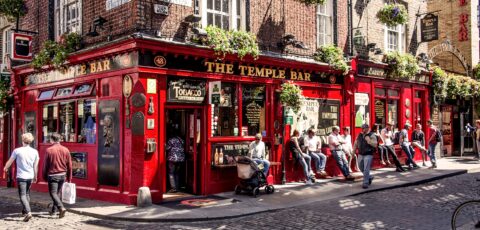
Go to Ireland.com
Our partners.


'Her Majesty's Prison Maze (known colloquially as Maze Prison , The Maze , The H Blocks or Long Kesh ) was a prison in Northern Ireland that was used to house paramilitary prisoners during the Troubles from mid-1971 to mid-2000.
It was situated in the former Royal Air Force station of Long Kesh , on the outskirts of Lisburn . This was in the townland of Maze, about nine miles (14 km) southwest Belfast . The prison and its inmates played a prominent role in recent Irish history , notably in the 1981 hunger strike . The prison was closed in 2000 and demolition began on 30 October 2006, but (as of 2010) has been halted.'
The EU and Irish Government were considering developing the Maze Prison as a Centre for Peace and Reconciliation, a Memorial for Peace. Steve Jensen worked with RAA to develop a feasibility and creative concept for the visitor journey and experience. A series of hot spots were suggested to tell a narrative whilst preserving the memory of the existing buildings.
After years of political negotiations the project was cancelled due to the political and humanistic sensitivity.
Maze/Long Kesh Visitor Experience
Collaboration with RAA Ralph Applebaum Assoc.
You have arrived to the PBCRC
Global context of peace-building
Engage in dialogue and discussion
History of conflicts and conflict resolution within Northern Ireland
The Maze/Long Kesh prison in context
Descend below and rise again into the existing prison site
Circumnavigate the prison walls and enter into the existing prison site
Dialogue space, interaction and interrelations
8. ENTER: AMAZEMENT
The shock and awe upon entering the site
Visitor searches, family reunions, airlocks
The history of the site as told through Compound 19
10. SIGN OF LIFE
Barbecues and family gatherings, a glimmer of happiness
11. CONFINEMENT
Holding cells, processing papers—the realisation of life as a prisoner
12. POWER, SURVEILLANCE
The incredible amount of site monitors and cameras
Enclosure in an air-lock
14. REFLECTION, HUMANITY
Caring for the prisoners; history of the Hospital
15. CULTURE, INTERACTION
Artist installations, inspired by the Prison
16. CARE, NATURE
Gardens maintained by the Prison Officers
17. SOLEMNITY, MELANCHOLY
H-Block cells, life in the prison;
Education and teaching rooms
18. PEACE, WORSHIP
Neutral, luminous, welcoming Chapel
19. REFLECTION
Meander through the sculpture garden
20. CONTEMPLATION, UNDERSTANDING
Temporary galleries; The Maze Prison in context of global events
Can You Visit Maze Prison?
06 Apr 2022, Prison Rules , by
In late 2021, the movie Belfast from writer/director Kenneth Branagh—and starring Jamie Dornan, Caitriona Balfe, and Judi Dench—hit theaters nationwide. The film is a coming-of-age drama set in Northern Ireland during a period known as, “The Troubles,” which lasted from the late 1960s until the late 1990s. “The Troubles” was a violent conflict between nationalists… Continue reading Can You Visit Maze Prison?
In late 2021, the movie Belfast from writer/director Kenneth Branagh—and starring Jamie Dornan, Caitriona Balfe, and Judi Dench—hit theaters nationwide. The film is a coming-of-age drama set in Northern Ireland during a period known as, “The Troubles,” which lasted from the late 1960s until the late 1990s.
“The Troubles” was a violent conflict between nationalists (mainly self-identified as Irish or Roman Catholic) and unionists (mainly self-identified as British or Protestant). This period ended with the Good Friday agreement in 1998.
Until Belfast , I didn’t know much about “The Troubles” aside from the fact that the conflict included Bloody Sunday—which I first learned about from the U2 song Sunday Bloody Sunday .
The reason I bring it up, though, is that “The Troubles” also included a famous prison break in the early 1980s that occurred at Maze Prison (aka Long Kesh Detention Center) in Northern Ireland.
Maze Prison is one of the most famous prisons in UK history, and it was a big part of “The Troubles” for many reasons. In today’s blog post, we are going to dive into some of that history. We are also going to answer the question: can you visit Maze Prison today?
In this blog post, I will cover the following topics:
A brief history of Maze Prison
How was maze prison used during the troubles.
- The Maze Prison Escape (aka The Great Escape)
Maze Prison and Peace
- Can you visit Maze Prison?
Her Majesty’s Prison Maze (previously known as Long Kesh Detention Center, and known colloquially as The Maze or H-Blocks) was situated at the former Royal Air Force station, Long Kesh, on the outskirts of Lisburn in Northern Ireland, in the townland of Maze (a Belfast suburb).
The facility became operational in 1971 following the introduction of internment. At that time, the British Army implemented Operation Demetrius and raided 452 suspects, with more than 300 arrests of Irish nationalists. But, those involved were accused of bungling the operation and arresting the wrong people by using outdated information.
The Nissen Huts (steel structured-barracks) at the Royal Air Force Base were used to intern those who were arrested during Operation Demetrius. These buildings became the Long Kesh Detention Center.
For the most part, the prison was used to house special category political prisoners. But eventually, individuals convicted of crimes were sent to the facility, and this really caused some problems.
In the late 1970s, eight new “H-Blocks” were built at the former air force base, and the facility was officially named Her Majesty’s Prison Maze. These blocks were supposed to be used to house inmates convicted of criminal activity (not political prisoners with special category status, like those involved in “The Troubles”).
“The eight H-Blocks – so named because of their uniform ‘H’ shaped plan – collectively formed a purpose-built maximum security prison for political prisoners. Unlike the compounds/ cages of Long Kesh, which housed prisoners collectively in Nissen huts, the H-Blocks separated prisoners into individual cells .
Each H-Block was surrounded by a concrete wall topped with barbed wire, and gates within the complex were constructed of solid steel. The entire site was also encircled by watch towers and a perimeter wall. The large complex also included a separate hospital building, a visiting building, multi-denominational chapel and two large football pitches, alongside multiple administrative buildings.”
The status of political prisoners was constantly changing based on who was in charge. But the political prisoners did not consider themselves to be, “common criminals.” However, the inmate populations were constantly being mixed.
This led to protests that included inmates refusing to wear uniforms and wrapping themselves in bedsheets. This protest was known as, “on the blanket.”
After years of protesting, “on the blanket,” more than 300 men had joined the cause. But the British government refused to back down. This led to inmates refusing to leave their cells to shower or use the bathroom, because if they did, they would be beaten.
Inmates who were, “on the blanket,” were given wash-hand basins to use in their cells. But, they were also repeatedly beaten and defenseless. The prison guards were almost exclusively Protestant with a “desire for revenge” against the Irish Catholic inmates.
For five years, this conflict between the political prisoners at Maze and the government continued. The “on the blanket” protest eventually turned into the “Dirty Protest.” Which meant the prisoners refused to leave their cells to “slop out,” or empty their chamber pots. Instead, they would smear their excrement on the cell walls to “mitigate the spread of maggots.”
This eventually led to the 1981 Irish Hunger Strike at Maze. The leader of the Provisional IRA, inmate Bobby Sands, led the hunger strike inside the prison. And on the outside, Sands was nominated for Parliament and won .
The government and new Prime Minister, Margaret Thatcher, continued to resist, however, and after a 66-day hunger strike Sands died. More than 100,000 people attended his funeral in Belfast. Nine more strikers died in the following months. The hunger strike was officially called off in October 1981.
The Maze Prison Escape
On September 25, 1983, the largest prison break in Europe took place when 38 inmates hijacked a prison meals truck and smashed their way out of Maze. To Irish Republicans, this is known as the “Great Escape.”
During the incident, four prison officers were stabbed, including one who ended up dying of a heart attack. Another officer was shot in the head, and several others were injured. Known as one of the most escape-proof prisons in Europe, the break from Maze came as a shock.
Nineteen of the escapees were eventually recaptured and sent back. But, the other 19 escaped. This incredible true story was dramatized in the 2017 movie Maze .
The prisoners at Maze Prison played a significant role in the Northern Ireland peace process during the late 1990s and early 2000s. Talks between the British Secretary of State for Northern Ireland and the inmates in the Ulster Defense Association led to the Good Friday Agreement in 1998.
After peace was made and a ceasefire was agreed upon, Maze Prison released all parliamentary political prisoners—428 in total. The remaining four inmates at the prison were transferred to another facility, and Maze Prison was closed in September 2000.
Since its closing, many buildings have been torn down. However, a few do remain to this day.
Many ideas and proposals have been submitted for the property, including a museum, a multi-purpose sports stadium, offices, hotels, a leisure village, and a peace center. So far, none of these projects have been developed.
In 2020, the site of the former prison was considered for conversion into a temporary COVID hospital.
The first public tours of Maze Prison took place in 2011, and they are still available if you’ve got connections. The site is officially closed to the public. So, the answer to today’s blog post question is technically, “no.” However, if you know the right people in the British government, you might be able to get a strict, guided tour of the property.
One H-Block is still standing, as is the prison hospital, where the purported last bed of Bobby Sands resides.
Did you know that Maze Prison was created because of political prisoners during The Troubles? Let us know in the comments below.
- Celebrities
- Prison Rules
- Uncategorized
Jail guard Amara Brown admits to DoorDash delivery for inmate
Guard Amara Brown at Alvin S. Glenn Detention Center is charged with using DoorDash to deliver a meal to an inmate.
Ali Miles seeks justice with $22 million lawsuit against NYC for transgender rights violation
Ali Miles, a trans woman, sues NYC for $22 million, alleging mistreatment and discrimination after being placed in a male prison.
South Dakota Legislators Consider State Coverage for Inmate Legal Defense Fees
South Dakota lawmakers explore shifting responsibility for inmate legal defense fees from counties to the state.

Visiting The Met?
The Temple of Dendur will be closed through Friday, May 10.
- The Collection
- The American Wing Ancient Near Eastern Art Arms and Armor The Michael C. Rockefeller Wing Asian Art The Cloisters The Costume Institute Drawings and Prints Egyptian Art European Paintings European Sculpture and Decorative Arts Greek and Roman Art Islamic Art Robert Lehman Collection The Libraries Medieval Art Musical Instruments Photographs Antonio Ratti Textile Center Modern and Contemporary Art
Crop your artwork:
Scan your QR code:
Gratefully built with ACNLPatternTool
The Maze/Long Kesh Prison: Aerial View
Donovan Wylie Irish
Not on view
For nearly thirty years, the Maze prison played a unique role in the conflict between loyalist paramilitary forces and republicans in Northern Ireland. Built in 1976 to house terrorist prisoners, the prison was the scene of violent protests, hunger strikes, mass escapes, and death. It was emptied in 1998 as part of the Good Friday Agreement. In 2002, the documentary photographer Donovan Wylie obtained exclusive permission to photograph the entire Maze prison complex. For Wylie, who grew up near the prison during the Troubles, there was a strong association between the architecture and the regime it represented. The Maze series is organized around different zones and elements of the Maze, which Wylie has titled as follows: Inertias (26 images), Steriles (6 images), Roads (8 images), H Block (2 triptychs), Yards (4 images), Sports Fields (2 images), Cells (24 images), Aerial (1 image), Perimeter (1 image), Entrance (1 image), Communal (1 image), Ablutions (1 image), Hospital Cell (1 image), Visits (1 image), Chapel (1 image). In 2007, Wylie returned to the Maze during its demolition, which he recorded both photographically and with video. Wylie’s Maze now stands in a complicated relationship to the demolished physical Maze, acting simultaneously as a record, an act of deletion, and a rewriting, while prompting questions about the role of photography in the context of memory and history.
Due to rights restrictions, this image cannot be enlarged, viewed at full screen, or downloaded.
Open Access
As part of the Met's Open Access policy , you can freely copy, modify and distribute this image, even for commercial purposes.
Public domain data for this object can also be accessed using the Met's Open Access API .
- https://www.metmuseum.org/art/collection/search/727655 https://www.metmuseum.org/art/collection/search/727655 Link copied to clipboard
- Animal Crossing
- Download image
- Enlarge image
Artwork Details
Use your arrow keys to navigate the tabs below, and your tab key to choose an item
Title: The Maze/Long Kesh Prison: Aerial View
Artist: Donovan Wylie (Irish, born Belfast, 1971)
Medium: Inkjet pigment print
Edition: 2/5 + 2 artist's proofs
Dimensions: 24 × 30 in. (61 × 76.2 cm)
Classification: Photographs
Credit Line: Purchase, Lila Acheson Wallace Gift, 2017
Accession Number: 2017.22.73
Rights and Reproduction: © Donovan Wylie
Learn more about this artwork
Related artworks.
- All Related Artworks
- By Donovan Wylie
- Modern and Contemporary Art
- Photographs
- From Europe
- From Republic of Ireland
- From A.D. 1900–present
The Maze/Long Kesh Prison: Sterile, Phase 3
The Maze/Long Kesh Prison: Prison Cell. H — Block 5, B — Wing, 14/24
The Maze/Long Kesh Prison: Prison Cell. H — Block 5, B — Wing, 20/24

The Maze/Long Kesh Prison: H — Block 5, Exercise Yard C
The Maze/Long Kesh Prison: Road, Phase 1
Resources for research.
The Met's Libraries and Research Centers provide unparalleled resources for research and welcome an international community of students and scholars.
The Met Collection API is where all makers, creators, researchers, and dreamers can connect to the most up-to-date data and public domain images for The Met collection. Open Access data and public domain images are available for unrestricted commercial and noncommercial use without permission or fee.
We continue to research and examine historical and cultural context for objects in The Met collection. If you have comments or questions about this object record, please complete and submit this form . The Museum looks forward to receiving your comments.

Modern and Contemporary Art at The Met
Prisons Blog
Can you visit maze prison.
March 18, 2023
In 2021, Kenneth Branagh’s movie “Belfast” hit cinemas across the United States. The film, which stars Jamie Dornan, Caitriona Balfe, and Judi Dench, is a coming-of-age drama set in Northern Ireland during a period known as “The Troubles,” which lasted from the late 1960s to the late 1990s. The conflict was between nationalists, mainly self-identified as Irish or Roman Catholic, and unionists, mainly self-identified as British or Protestant. The Good Friday Agreement in 1998 marked the end of this period.
Prior to watching “Belfast,” the writer did not know much about “The Troubles” except for Bloody Sunday, which they learned about from U2’s song “Sunday Bloody Sunday.” However, “The Troubles” also included a famous prison break that occurred in the early 1980s at Maze Prison, also known as Long Kesh Detention Center, in Northern Ireland.
Maze Prison is one of the most well-known prisons in UK history and played a significant role in “The Troubles” for several reasons. In this blog post, the writer delves into the history of Maze Prison and addresses whether it is possible to visit the prison today.
Maze Prison was built in 1971 and initially held prisoners who were detained under special powers. These powers allowed for detention without trial, and many of the detainees were subjected to harsh treatment. The prison was intended to house 1,500 inmates, but at its peak, it held over 4,000 prisoners.
In 1981, the Maze Prison was the site of a significant event in the history of “The Troubles”: the hunger strikes. Irish Republican Army (IRA) prisoners demanded that they be treated as political prisoners rather than criminals. The strikes lasted several months and resulted in the deaths of ten prisoners.
In 1983, thirty-eight prisoners escaped from Maze Prison, which was a major embarrassment for the UK government. The escape was meticulously planned, and it involved the use of smuggled guns and a hijacked helicopter. The escapees were recaptured within days, but the incident further highlighted the security flaws at Maze Prison.
Maze Prison was closed in 2000, and the site has since been redeveloped. Today, there is a conflict transformation and reconciliation center on the site, which aims to promote peace and understanding between the different communities in Northern Ireland. The center includes an exhibition on “The Troubles,” and visitors can learn about the history of the prison and the conflict.
In this blog post, I will cover the following topics:
How was Maze Prison used during The Troubles?
A brief history of maze prison.
- Can you visit Maze Prison?
- The Maze Prison Escape (aka The Great Escape)
Maze Prison and Peace
The Long Kesh Detention Center was once the Royal Air Force Base in Northern Ireland that housed individuals arrested during Operation Demetrius. It later became a prison that held special category political prisoners, including those involved in “The Troubles,” a violent conflict between nationalists and unionists that lasted from the late 1960s until the late 1990s.
The prison was initially made up of Nissen Huts, but the construction of eight new “H-Blocks” in the late 1970s was supposed to segregate inmates convicted of criminal activity from political prisoners with special category status. Each H-Block had individual cells separated by a concrete wall topped with barbed wire, and gates within the complex were constructed of solid steel. The entire site was also encircled by watch towers and a perimeter wall. The large complex also included a separate hospital building, a visiting building, multi-denominational chapel, and two large football pitches, alongside multiple administrative buildings.
The status of political prisoners constantly changed, causing the inmate population to mix, leading to protests. The “on the blanket” protest began with inmates refusing to wear uniforms and wrapping themselves in bedsheets. The British government refused to back down, causing inmates to refuse to leave their cells to shower or use the bathroom. Inmates on the blanket were given wash-hand basins to use in their cells, but they were repeatedly beaten by the almost exclusively Protestant prison guards who had a desire for revenge against the Irish Catholic inmates.
The protest eventually turned into the “Dirty Protest” where prisoners refused to leave their cells to “slop out,” or empty their chamber pots, and smeared their excrement on the cell walls to “mitigate the spread of maggots.” This led to the 1981 Irish Hunger Strike at Maze. Inmate Bobby Sands, leader of the Provisional IRA, led the hunger strike inside the prison while also being nominated for Parliament and winning on the outside.
The government and new Prime Minister Margaret Thatcher resisted the hunger strike, and after a 66-day hunger strike, Sands died. Nine more strikers died in the following months, and the hunger strike was officially called off in October 1981. More than 100,000 people attended Sands’ funeral in Belfast.
The conflict between the political prisoners at Maze and the government lasted for five years. Inmates who were “on the blanket” and the “Dirty Protest” were repeatedly beaten and defenseless. The prison guards had a desire for revenge against the Irish Catholic inmates, who they saw as political enemies.
The prison was closed in 2000, and the site was redeveloped as a business park in 2006. Visitors are not allowed on the site, as it remains a private property with a high-security fence. The H-Blocks were demolished in 2007, and the hospital building was destroyed in 2019.
Her Majesty’s Prison Maze, also known as The Maze or H-Blocks, was located on the outskirts of Lisburn in Northern Ireland. It was previously known as the Long Kesh Detention Center and was situated at the former Royal Air Force station in Maze, which is a Belfast suburb. The prison was established in 1971 following the introduction of internment, and it was created in response to Operation Demetrius, which saw the British Army raiding 452 suspects, resulting in over 300 arrests of Irish nationalists. However, the operation was criticized for arresting the wrong people due to outdated information.
While the official answer to whether you can visit Maze Prison is “no” because the site is closed to the public, the first public tours took place in 2011 and are still available to those who have connections. However, access to the property is strictly controlled, and you need to know the right people in the British government to arrange a guided tour. There is one remaining H-Block, as well as the prison hospital where Bobby Sands purportedly spent his last days.
The Maze Prison Escape
The “Great Escape” is the name given by Irish Republicans to the largest prison break in Europe that occurred on September 25, 1983, at Maze Prison. This notorious incident involved 38 inmates hijacking a prison meals truck and forcibly escaping the prison compound.
During the escape, four prison officers were brutally attacked, with one succumbing to a fatal heart attack. In addition, another officer was shot in the head, and several others were injured. This prison had previously been regarded as one of the most secure in Europe, making the successful escape all the more remarkable.
Although 19 of the escapees were eventually recaptured and returned to prison, 19 others remained at large. The story of this daring escape has been immortalized in popular culture, and was even made into a film in 2017 titled “Maze.”
Despite the daring nature of the escape, the incident was viewed as a major embarrassment for the prison authorities and the British government. The escapees were hailed as heroes by Irish Republicans and seen as symbols of resistance against the British occupation of Northern Ireland.
The role of Maze Prison in the Northern Ireland peace process during the late 1990s and early 2000s was significant. The talks between the inmates of the Ulster Defense Association and the British Secretary of State for Northern Ireland resulted in the Good Friday Agreement in 1998. After the ceasefire, Maze Prison released all parliamentary political prisoners, totaling 428 individuals. The remaining four inmates were transferred to another facility, and the prison was closed in September 2000.
Since its closure, many of the buildings have been demolished, but some still stand. There have been various proposals for the property, such as turning it into a museum, a sports stadium, offices, hotels, a leisure village, and a peace center. However, none of these plans have come to fruition.
In 2020, the site was being considered as a temporary COVID hospital. The decision to use the location for this purpose was met with some controversy due to the prison’s history and its emotional significance to the people of Northern Ireland. Nevertheless, it underscores the potential usefulness of the space, and it will be interesting to see what future plans may come to fruition.
Frequently Asked Questions
Can i visit maze prison.
No, the site is officially closed to the public. However, guided tours of the property may be possible for those with connections to the British government.
How can I arrange a tour of Maze Prison?
It is not easy to arrange a tour of Maze Prison, as the site is closed to the public. However, if you know someone with connections to the British government, they may be able to arrange a guided tour for you.
What can I see at Maze Prison?
One H-Block is still standing, as is the prison hospital, where the purported last bed of Bobby Sands resides. However, it is important to note that the site is not open to the public and visiting is highly restricted.
Why is Maze Prison closed to the public?
Maze Prison was closed in 2000 and since then, there have been many proposals for the property, including a museum, a multi-purpose sports stadium, offices, hotels, a leisure village, and a peace center. However, none of these projects have been developed. The site is now owned by the Northern Ireland Executive and is closed to the public due to safety concerns and the sensitive nature of the site’s history.
Maze Prison played a significant role in the history of Northern Ireland, particularly during the period of conflict known as “The Troubles.” The prison was notorious for its high-security and the internment of political prisoners, many of whom engaged in hunger strikes and other protests. However, after the signing of the Good Friday Agreement in 1998 and the subsequent release of political prisoners, Maze Prison was closed in 2000.
While the site is officially closed to the public, there have been limited opportunities for guided tours in the past, and the prison’s remaining structures still stand as a reminder of its history. The future of the site remains uncertain, with various proposals for its development, but no concrete plans have been put in place yet. Overall, Maze Prison remains a significant part of Northern Ireland’s history and continues to attract interest and attention from around the world.

Coley's writing captures the essence of prisoner experiences and life within prison walls. With a commitment to sharing first-hand accounts and offering profound insights into the criminal justice system, Coley's blog provides a compelling narrative that educates and informs.
Leave a Comment Cancel reply
Save my name, email, and website in this browser for the next time I comment.
Welcome to our prisonsblog.com dedicated to the world of prisons. Our mission is to provide insightful and thought-provoking content about the prison system, including issues related to incarceration, rehabilitation, and reform.
Our team of writers is passionate about sharing their knowledge and perspectives on the complex issues surrounding the prison system. We strive to provide a platform for dialogue and discussion,
Latest news
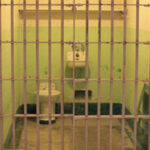
Can You Search Prison Inmates?
April 26, 2023
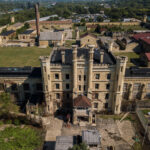
Can You Visit Joliet Prison?
April 17, 2023

Can You Hug Someone in Prison?
April 15, 2023
Thank you for visiting our Prisons Blog website. If you have any questions or comments, please don't hesitate to reach out to us.
123 Main Street, Suite 456, Anytown, USA 12345
Phone: +1 (555) 123-4567
[email protected]
Copyright @ 2023 prisonsblog.com
Privacy policy
Bobby Sands’ bed and Long Kesh/Maze’s afterlife
Archives and memories don’t tell the full story. that is why material things, the ‘stuff’ of imprisonment, are an important but often unconsidered source.
An IRA cell in the Maze/Long Kesh prison site. Bobby Sands’ deathbed there has become a place of pilgrimage for republicans and a source of souvenirs. Photograph : Niall Carson/PA Wire
Taking an archaeological perspective on a place – Long Kesh / Maze prison – and a time – 35 years ago – that are neither buried in the depths of prehistory nor exotically located may seem an unusual proposition. However, I argue that in attempting to understand somewhere as contentious and misrepresented as Long Kesh/Maze during the hunger strikes one needs to move beyond the usual suspects, so to speak.
Generally, our understandings of how prisons work are guided and constrained by government records and official documents created by the regimes who police and administer them. While they contain a wide variety of information there are obvious limitations as to whose perspectives and viewpoints they represent and there are clear gaps in knowledge that limit their effectiveness at really uncovering what Long Kesh/Maze was then and is now.
The oral testimonies, or shared memories, of those who were held and/or worked at the site are an important counterbalance to official archive in that they allow a personal if evolving perspective. Of course, they also suffer from their own partialities, biases and blindspots and there is a general acceptance that memories are continually impacted, and reconstructed, by the moving moment of “present day” rather than being grounded in an unchanging “truth” of the past. This is why material things, the “stuff” of imprisonment, are an important but often unconsidered source. There are numerous material remnants from Long Kesh/Maze, dating throughout its functional life, which provide insights into how it was understood and experienced by both prisoners and prison officers (see McAtackney 2014) but for this article I want to concentrate on the hunger strikes, the afterlife of the site and its enduring meaning.
On closure in 2001 Long Kesh/Maze became a graveyard of artefacts: significant, worthless, facilitating, debilitating, used, abused, utilized, subverted, negotiated, hidden, discovered, forgotten, remembered, public, private, treasured, despised, loved, hated, but all ultimately discarded. Pre-demolition they scattered the site, lying randomly, deposited haphazardly. Perched conspicuously on a table, abandoned to a sideboard, on top of a cabinet, scattered on the floors, some appeared to lie where they were last used, others moved since closure. Though they were dulled though age and abandonment, they illuminated the gloom; humanising their surroundings whilst acting as vital clues to how the prison had previously functioned, been experienced and once understood. One of the more telling material things I encountered was “Bobby Sands’ Bed”.
Bobby Sands’ Bed
The purported last bed of Bobby Sands resides in one of the few remaining structures of Long Kesh/Maze: the H-Block prison hospital. Due to its associations with the 10 dead hunger strikers, the hospital is undoubtedly the focus of any tour of the prison site (for those allowed access by OFMDFM, the site has been mainly demolished and remains closed to the general public). For republican prisoners, in particular, their link with those who died on hunger strikes was not just political but also painfully personal and the cell where Sands died has become a form of pilgrimage site for those who have returned to visit. This connection is clear in the ongoing interactions with the bed that resides there.
Over the course of the many years I have accessed Long Kesh/Maze, on strictly controlled and guided tours, I have noticed how the Sands’ hospital cell has remained unadorned and unchanged, except for the bed. The bed displays the extent of numerous swift and anonymous interactions. The wire mesh of the bedsprings is no longer intact, a substantial number of individual springs having been extracted and secreted from the room. Clearly these bedsprings are no longer simply constituent parts of a piece of institutional furniture. They have heightened significance for those who remove them, having transitioned in meaning from functional to cultural if not spiritual, and are simultaneously a piece of heritage to some whilst remaining the source of deep discomfort to others (especially the custodians).
This bed is important not just for its link to Bobby Sands – in all probability it is not the actual bed where Sands died. The hospital functioned for nearly 20 years after his death and the bed has probably been moved or replaced a number of times – but for its ordinariness, mundanity and relatability. A bed is institutional and practical yet simultaneously domestic, homely and intimately connected to the man who died in this room. It symbolises the closest physical link to a long-dead man whose self-sacrifice to some – suicide to others – continues to have wide-reaching impacts. Although any connection to Bobby Sands is precious to hold and retain for many, the pattern of the remaining wire suggests that the springs have been removed sparingly, one by one. In doing so the material integrity of the bed remains; the performance can be repeated by the next visitor; traces of the original bed remain relatively intact in the place of death; the ghosts of this place are retained.
The enduring meaning of Long Kesh/Maze
In trying to understand Long Kesh/Maze and the hunger strikes 35 year on one must include the complexities of the meanings of the things from it. Material things are slippery and illusive, their meanings can appear straightforward in following their form but their meaning can be transformed by event, time and/or threat to survival. The springs of a bed are materially unexceptional but they can represent an intimate connection to a long dead man whose memory endures. It is clear that the continued connection between republican public memory and the hunger strikes, which is still explicitly articulated through wall murals and memorials, is also maintained on many levels throughout society for various reasons.
Things are important in maintaining and directing meaning into the future. They allow us a better understanding of what Long Kesh/Maze was but also how it continues to be meaningful today. They provide a material connection to previous times; while they exist they retain the latent ability to provide new “material memory” (Olivier 2015) into the yet unknown future. They also humanise, personalise and inject emotion into our understandings of the past. Standing over Bobby Sands’ bed makes it harder to dismiss emotional connections as irrational and the result of propaganda or manipulation. As Patrick Cooke has mused on the impact of another Irish historical prison, Kilmainham Gaol in Dublin: “If you stand there, you are confronted less by an idea, than by the meaning of an individual life and its extinction. The situation is more palpably tragic, less glibly amenable to deconstructive analysis” (Undated: 7).
Dr Laura McAtackney is Associate Professor in Sustainable Heritage Management, Aarhus University, Denmark [email protected]
Cooke, Patrick (undated). Kilmainham Gaol: Interpreting Irish nationalism and Republicanism. Open Museum Journal 2. Pp. 1-11.
McAtackney, Laura. 2014. An Archaeology of the Troubles: the dark heritage of Long Kesh/Maze. Oxford: Oxford University Press.
Olivier, Laurent 2015. The Dark Abyss of Time: Archaeology and Memory. London: Rowland & Littlefield.
IN THIS SECTION
Ucd festival’s literary highlights, earth by john boyne: the footballer’s story, peace comes dropping slow by denis bradley: a no-frills account of the troubles and its legacy, claire keegan wins prestigious german award, openings by lucy caldwell: enlightening and enriching collection of stories that closes a loose triptych, the dublin portal: when a new yorker gave them the finger, dubliners returned the gesture, bruce springsteen’s first irish gig of 2024: the boss kicks off in belfast with no surrender, then builds a momentous set, eurovision 2024: israel singer eden golan makes final after public vote, emergency landing at dublin airport due to hydraulics issue with plane, closure orders: rodent droppings and grime found in kitchens at fitzpatrick’s castle hotel, killiney, latest stories, man transported from liverpool to northern ireland over robbie lawlor murder.
:quality(70)/cloudfront-eu-central-1.images.arcpublishing.com/irishtimes/IRZYL3TFDLXK2VB22BXRPJK6GM.jpg)
Bayer Leverkusen and Atalanta to meet in Europa League final in Dublin
:quality(70)/cloudfront-eu-central-1.images.arcpublishing.com/irishtimes/272LUG2EJRUZXQZLGDSGVYXSUQ.jpg)
Number of asylum seekers being accommodated by State exceeds 30,000 for the first time
:quality(70)/cloudfront-eu-central-1.images.arcpublishing.com/irishtimes/QHJXRMF3JKAJUWIPQWSDEIZE24.jpg)
Man (20s) dies following scrambler bike crash in west Dublin
:quality(70)/cloudfront-eu-central-1.images.arcpublishing.com/irishtimes/PZS2P6CVRZCNOFYIEFU6S5ITQA.jpg)
Eurovision: Greta Thunberg among thousands protesting against Israel competing in contest
:quality(70)/cloudfront-eu-central-1.images.arcpublishing.com/irishtimes/UBZPC6DPIQYWYK3O6QS36V7OOA.jpg)
Sudan war spurs ethnic cleansing in Darfur, says rights group
:quality(70):focal(1061x445:1071x455)/cloudfront-eu-central-1.images.arcpublishing.com/irishtimes/4MN3EZ26GGY7TPR5QKUX2ZSWMM.jpg)
The Irish Times view on Xi Jinping’s European visit: tensions remain over trade and Ukraine
:quality(70)/cloudfront-eu-central-1.images.arcpublishing.com/irishtimes/TSNM6O2LJ4PQUUQ3P6BX3PU3B4.jpg)
- Terms & Conditions
- Privacy Policy
- Cookie Information
- Cookie Settings
- Community Standards
- Share full article
Advertisement
Supported by
A Prison Site’s Future Stirs Up the Ghosts of Its Notorious Past

By Douglas Dalby
- May 18, 2013
MAZE, Northern Ireland — On a quiet country road south of Belfast, only the sudden appearance of a watchtower and portions of walls offer any hint of what was once Europe’s most notorious prison. After the last inmates walked out the gates in 2000, the bulldozers moved in, leaving little of the top security fortress intact.
The road signs and the buildings of the old Maze prison have proved far easier to erase than the vivid memories of the events that took place here, particularly the 1981 hunger strike in which Bobby Sands , an Irish Republican Army leader convicted of a firearms charge, and nine of his comrades died in pursuit of the right to be treated as political prisoners rather than criminals.
Now, 15 years after the Good Friday peace accord paved the way for the controversial early release of hundreds of paramilitary prisoners — pro-British unionists as well as republicans opposed to British control over Northern Ireland — the site of the old prison has once again become a vortex of political discord.
After more than a decade of indecision, the power-sharing local government recently agreed to build a center devoted to the study of peace and conflict resolution on part of the old prison site, along with an industrial park for high-tech companies.
The government commissioned Daniel Libeskind, the architect best known for his work at the ground zero site in Manhattan and the Jewish Museum in Berlin, to design the center to reflect the complexities of the conflict, known as the Troubles, that claimed more than 3,000 lives over 30 years.
But instead of being embraced as a powerful symbol of reconciliation and a shared future, the proposed peace center has already become mired in the continuing dispute between unionists and republicans over how the story of the Troubles will be told.
The prototype designs Mr. Libeskind released this month have been eclipsed by the controversy surrounding the site itself, particularly the single remaining H-shaped cellblock containing the small hospital where the hunger strikers spent their last days.
Although the cellblock will not be part of the new center, some pro-British unionists contend that the site will become a “shrine to terrorism.”
“This is the most toxic and divisive site that you could possibly choose for such a building,” said the leader of the Ulster Unionist Party, Mike Nesbitt. “It is clear there will be an undue focus on the prisoners rather than their innocent victims.”
Other unionists who have supported the project in the local government assembly have dismissed such views as “scaremongering rubbish.”
“The idea that representatives like myself who put on a uniform to fight I.R.A. terrorism and who walked behind the coffins of comrades and family members murdered by the I.R.A. would now countenance a shrine to the I.R.A. is such a nonsense that it says more about the motivation of those who allege it than it does about us,” said Jeffrey Donaldson, an elected representative of a rival unionist party.
One former hunger striker who supports the peace center, Pat Sheehan, 55, contends that its opponents are guilty of overstating the symbolic importance of the site to republicans.
“The people who died are not in the walls or floors of the H-blocks,” he said. “They are alive and well in the hearts and thoughts of another generation who have been inspired by their sacrifice.”
The election of Mr. Sands to the British Parliament weeks before he died bestowed a populist legitimacy on the I.R.A. campaign and eventually propelled Sinn Fein, the I.R.A.’s political wing, to power in the local assembly.
“His victory exposed the lie that the hunger strikers — and by extension the I.R.A. and the whole republican movement — had no popular support,” the Sinn Fein president, Gerry Adams, said of Mr. Sands.
Mr. Sheehan went 55 days without food and would probably have been next to die had the protest not collapsed under pressure from the prisoners’ families. At the time, his doctors told him he might not survive anyway because of the damage his long fast caused to his liver. But he recovered and is now a Sinn Fein representative in the local Parliament.
In a recent interview, Mr. Sheehan recalled his decision as a 23-year-old to volunteer for the hunger strike.
“The British saw us as the soft underbelly and believed if they could break us it would be a crushing blow to the I.R.A. struggle,” he said. “Bobby Sands believed he was going to die; those of us who went on hunger strike all believed we were going to die, and you had to have total tunnel vision to cope with that decision — you can’t let anything impinge.”
Another former hunger striker, Gerard Hodgkins, 54, spent nearly half his adult life behind bars at Maze and described the fast as the only leverage available to the prisoners. In his small west Belfast apartment, reminders of his prison days are all around, including images of the 10 men, their faces frozen in perpetual youth, on every wall.
“I figured, what more can they do to us?” Mr. Hodgkins recalled. “We had been tortured; we lived in almost total isolation from the outside world in a brutal regime; we wore only blankets and were covered in our own filth in freezing cells. Something had to give, and our choices were very limited.”
Since the Good Friday agreement of 1998, a new industry has sprung up in Belfast as thousands of visitors now embark on guided “terror tours” around the notorious spots where atrocities took place, taking in the peace walls and the vivid murals commemorating the main events.
After Mr. Libeskind’s center opens in 2015, the 15-mile trip to Maze is likely to be included as an evocative finale to the tours.
The body organized to see the project through, the Maze Long Kesh Development Corporation, is eager to play down the history of the prison, pointing out that the site has a long and varied past. It was once a Royal Air Force base and then a racetrack.
The corporation’s chairman, Terence Brannigan, has described the redevelopment plans, and the industrial park’s promise of 5,000 jobs for a moribund economy, as “an opportunity we simply cannot afford to ignore.”
“We have already had significant international interest shown in developing the site, and we anticipate that global investors will be excited about what is an unprecedented development opportunity,” Mr. Brannigan said.
But for most people, the real attraction will not be the industrial park intended to lure high-tech industries, but the chance to glimpse the ghosts of a troubled past.
In a statement last month, Mr. Libeskind said, “It is truly meaningful to build a hope-filled common ground, to tell individual stories and to do so at Maze Long Kesh.”
Critics are dismissing such sentiments as wishful thinking.
“When a group of Irish-Americans turn up with flowers, who will create an international incident by telling them they can’t lay them there?” Mr. Nesbitt said. “People make shrines, and I guarantee you that whatever anyone says, this place will become a shrine.”
- About WordPress
- Get Involved
- WordPress.org
- Documentation
- Learn WordPress
The Ireland Tour
Website for the 2014 geneseo alumni ireland trip, h-block memorial.
March 1976: British government ends “special status” treatment for IRA prisoners. With the opening of the new H-Block prison complex at the Maze Prison, IRA and other Republican prisoners would be subjected to the same rules as “ordinary” criminals.
September 1976: Kieran Nugent, the first IRA prisoner sentenced under the new guidelines, symbolically refuses to wear the prison uniform. His protest quickly spreads, inaugurating the “Blanket Protest”, during which Republican prisoners would wear only a blanket. By 1978, more than 300 prisoners are “on the blanket”.
March 1978: In response to several episodes of violence by prison guards, blanket protestors refuse to leave their cells to bathe. The protest quickly escalates as the British prison authorities remove all furnishings except blankets and chamber pots from cells; in response, prisoners begin the “Dirty Protest”, in which prisoners spread their own excrement around the walls of their cells.
BBC Footage of the Blanket and Dirty Protests
Early 1980: With the Dirty Protest stalled, Republican prisoners began lobbying the British government for five key concessions (“The Five Demands”) – the right to wear civilian clothes, the right to abstain from prison labor, the right to organize and fraternize with other political prisoners, the right to communication outside of the prison, and reversion to pre-1976 prison conditions.
October 1980: Seven Republican prisoners began hunger strikes in the Maze. Lasting 53 days, eventually 30 men participated in the hunger strike.
December 1980: In dialogue with Tomás Ó Fiaich, Roman Catholic Archbishop of Armagh, the hunger strikers abandoned the strike, believing that concessions from the British government would follow.
March 1981: Bobby Sands began a hunger strike in the Maze Prison. Between March and October 1981, 23 men went on hunger strike and 10 died of starvation.
April 1981: The death of Frank Maguire, MP for Fermangh and South Tyrone in the British Parliament, necessitated a by-election to name a replacement. Republicans in the district nominated Bobby Sands and won a surprise, but narrow victory. Although unable to take up his seat in Parliament due to imprisonment, the electoral victory drew international attention and put substantial pressure on Margaret Thatcher’s government to negotiation. As the campaign developed, more Republican prisoners went on hunger strike, with one new participant joining the strike every week.
May 1981: The Thatcher government remained inflexible in the face of appeals from various international figures, including Pope John Paul II’s private secretary. When Bobby Sands died on May 5, after 66 days on hunger strike, riots occurred over Northern Ireland and international protests condemned the Thatcher administration. Sands’s funeral at Milltown Cemetery in Belfast drew more than 100,000 mourners.
May-August 1981: Nine other Republican prisoners died on hunger strike.
August 1981: After decades of non-participation in Northern Ireland election, Sinn Féin contested and won the by-election to fill Bobby Sands’ vacant seat representing Fermanagh and South Tyrone in the British Parliament. This successful electoral intervention eventually evolved into the “Armalite and ballot box” campaign, which dominated Republican activities in the 1980s.
September 1981: The family of Laurence McKeown intervened to insert a feeding tube after he passed into a coma after 70 days on hunger strike. From this point forward, intense pressure on families would complicate the hunger strike strategy.
October 1981: Republican prisoners announce the end of the hunger strikes, blaming the British government and Roman Catholic clergy for pressuring family members. Three days later, British prison officials announced that new policies that duplicated the Five Demands would be enacted at the Maze Prison.
BBC Coverage of Bobby Sands’s Hunger Strike and Death
Bobby Sands’s Prison Diary
Bobby Sands’s Prison Poems
Leave a Reply Cancel reply
You must be logged in to post a comment.
This site uses Akismet to reduce spam. Learn how your comment data is processed .
- Northern Ireland Tourism
- Northern Ireland Hotels
- Northern Ireland Bed and Breakfast
- Northern Ireland Vacation Rentals
- Flights to Northern Ireland
- Northern Ireland Restaurants
- Things to Do in Northern Ireland
- Northern Ireland Travel Forum
- Northern Ireland Photos
- All Northern Ireland Hotels
- Northern Ireland Hotel Deals
- Last Minute Hotels in Northern Ireland
- Northern Ireland
- Things to Do
- Restaurants
- Vacation Rentals
- Travel Stories
- Rental Cars
- Add a Place
- Travel Forum
- Travelers' Choice
- Help Center
Maze Prison - Northern Ireland Forum
- Europe
- United Kingdom (UK)
- Northern Ireland
Maze Prison
- United States Forums
- Europe Forums
- Canada Forums
- Asia Forums
- Central America Forums
- Africa Forums
- Caribbean Forums
- Mexico Forums
- South Pacific Forums
- South America Forums
- Middle East Forums
- Honeymoons and Romance
- Business Travel
- Train Travel
- Traveling With Disabilities
- Tripadvisor Support
- Solo Travel
- Bargain Travel
- Timeshares / Vacation Rentals
- United Kingdom forums
- Northern Ireland forum

I've always been interested in the history of the Troubles, and there are lots of places I plan on visiting. However, I would be very interested in seeing the Maze prison. I know most of it has been torn down, but I do believe at least one of the old H-Block buildings is still standing.
This may be completely unfeasible, but is there anyway at all to visit this location and see inside of what is left of the prison? I don't think it is open to the public, so the answer is most likely "no", but I figured I would at least ask.

You could also ask the Ulster Museum where this photography exhibition will be in case it is touring and you can see it someplace else (it will be gone from the museum by the time you arrive) - http://nmni.com/um/What-s-on/Current-Exhibitions/Conflicting-Images.
The site has one H block left. One set of politicians want to use it as a museum of some form, the other side don’t want it becoming a glorification of violence thus creating the usual intractable stalemate between the dinosaurs and the site being blocked for any use.
Part of the site had been given over to an agricultural society and they have built the Eikon exhibition centre that’s open for the odd event, mainly the annual agricultural show in May. It’s massive, even attracting the U.K. prime minister this year.
Most of the rest of the site has been bulldozed including the Long Kesh part that housed internment prisoners. That’s all except for a few hangers which are listed buildings and currently house the Ulster Aviation Society and look straight over at the remaining H block. The society are limited in what they can do because of the political row but you can phone them and arrange a guided tour which is extremely worth while and a hidden jem. Go during daylight hours though as they can show you around both hangers then. The original site was an important airbase.
Go to the Crumlim Road jail. It’s great and adds plenty of colour to a trip and they run special events fairly often.
contact info for the UAC in the Black Hanger. They are open for visits.
http://ulsteraviationsociety.org/home
If you were genuinely interested in the aircraft the aviation folks might have been prepared to arrange a visit, but I don't think you have a particular interest.
Google "Maze peace and reconciliation" and you will get some background to the issue.
Nah they won’t let you near the prison
why bring this up again? its a year old.

If you are really interested in the truthful history of the Maze Prison and what actually happened there I suggest that you read the recently published book 'The Maze Prison-A Hidden Story of Chaos,Anarchy and politics'. In this excellent academic study the author presents a very different narrative to that which has gained currency in recent times.
This topic has been closed to new posts due to inactivity.
- Londonderry and gaunt causeway tour 7:37 pm
- Black cab tours 7:30 pm
- Breakfast en route 1:45 pm
- Golf courses close to the A5 today
- 3 nights in Derry May 07, 2024
- Bus tickets Belfast May 07, 2024
- TIme recommendation for drive, prison, and tour May 05, 2024
- Live music May 03, 2024
- Belfast to Dublin logistics May 02, 2024
- Marches May 01, 2024
- What bus to the Titanic Belfast? Apr 30, 2024
- Access and Entry to Gisnts Causeway Apr 29, 2024
- Where to stay Apr 29, 2024
- Trip Report 30/03/24 to 03/04/24 Apr 29, 2024
- places to stay near Giant's causeway 4 replies
- Belfast to Portrush 10 replies
- Self Drive Itinerary for Northern Ireland 13 replies
- Logwood Santa Trail 4 replies
- Afternoon tea 2 replies
- Using British pounds in Northern Ireland 6 replies
- How to get from Paris to Belfast? 5 replies
- Getting from Belfast to Bruges? 3 replies
- Manor House Resort Hotel ,Killadeas Co Fermanagh 11 replies
- Feedback on my itinerary - Belfast to Enniskillen 11 replies
Northern Ireland Hotels and Places to Stay
- What about bus and train times ?
- Getting to and from the airports
- Belfast in your pocket (city guide)
- A guide to the Causeway Coast
- How safe will i be in Northern Ireland
- What about day trips
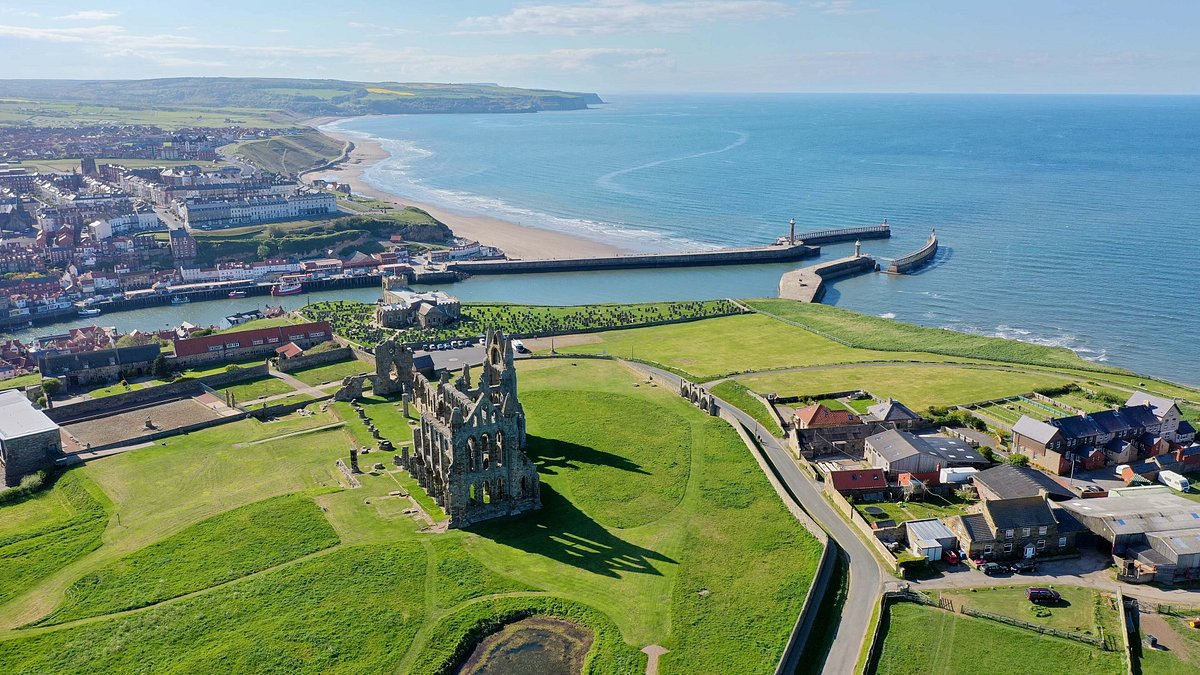
- North America
- 7 Prison Museums You Can...
Prison Museums You Can Visit Across The US

With over 100,000 prisons and jails around the globe, historic jail cells and prison museums have become a huge draw for tourists, and the US is no different – the states has over a dozen historic prisons to discover. From Alcatraz Island’s remote location off the shores of San Francisco to Eastern State Penitentiary’s famous haunted cells, learn about the histories and tales that characterize the past of these seven U.S. prisons.
Did you know – Culture Trip now does bookable, small-group trips? Pick from authentic, immersive Epic Trips , compact and action-packed Mini Trips and sparkling, expansive Sailing Trips .
Alcatraz, California

Alcatraz is reputed to have housed some of the most dangerous prisoners of the 20th century, including mobster Al Capone and gangster Alvin Karpowicz ; referred to as ‘the prison system’s prison,’ Alcatraz received the most difficult inmates. Built on an island off the coast of San Francisco, ‘The Rock,’ as it was nicknamed, made for a challenging escape, although over a dozen attempts were made – none of which were successful. Alcatraz was originally built in the 1850s as a U.S. military fortress and housed military prisoners until 1933, when it was renovated as a maximum-security prison. Alcatraz could hold 260–275 prisoners during its time of operation, less than one percent of the entire federal inmate population, but officially closed its doors in 1963 due to its high operating costs.

Eastern State Penitentiary (ESP) was part of a controversial movement in the early 1800s that advocated the use of solitary confinement and hard labor to alter the behavior of inmates. Designed in a ‘radial-style’ floor plan, ESP was one of the most costly buildings of its time, with vaulted ceilings, skylights, and 253 cells, each with its own toilet, running water, and heat. The layout and practices at ESP were so popular that they were replicated in over 300 other prisons worldwide; by the early 1930s, however, the prison abandoned the solitary confinement system, replacing it with other severe forms of punishment. Operating from 1829–1971, the prison held some of the nation’s most infamous criminals, including Al Capone (before his time at Alcatraz) and Willie Sutton ; today, it’s considered one of the most haunted buildings in the world.
Sing Sing Prison, New York
Home to the first electric chair (‘Old Sparky’), the famous Babe Ruth baseball game , and some of the nation’s most notorious criminals, like Albert Fish and David Berkowitz , Sing Sing is one of America’s most famous prisons. Built by 100 prisoners from another local prison, Sing Sing was one of the most impressive prisons of its kind upon its completion in 1828. Originally modeled after Captain Elam Lynds’ ‘silent system’ – the use of ‘hard work, community activity and silent reflection’ to alter inmate behavior – the prison eventually moved to a more modern approach that used sports to teach discipline, introduced by Warden Lewis Lawes . While the prison still holds more than 1,500 inmates today, plans for turning the prison’s 1939 power plant into a 22,000-square-foot museum are in the making. Visit the museum in the meantime, located in The Ossining Historical Society Museum .
Ohio State Reformatory, Ohio

The Ohio State Reformatory , also known as the Mansfield Reformatory, was constructed between 1886 and 1910 to act as an ‘intermediate penitentiary’, or the half-way point between the Boys Industrial School and the Ohio Penitentiary. In the mid-1800s, the land was originally used as Civil War training grounds; in 1884, plans for the new prison were approved by the state. Designed by Levi T. Scofield, the reformatory featured Victorian and Romanesque architectural styles, believed to encourage inmates to get in touch with their spiritual side. In 1990, the Boyd Consent Decree deemed the prison overcrowded and unsanitary – over 200 inmates had died during its operation – forcing it to close its doors. Today, the prison operates as a museum, and has been included in many famous films like The Shawshank Redemption ( 1994).
West Virginia State Penitentiary, West Virginia
After separating from Virginia at the height of the Civil War, West Virginia lacked many public institutions, including a prison. After repeated denials, the West Virginia Legislature finally purchased the land for the West Virginia State Penitentiary in 1886. Completed using prison labor in 1887, the prison’s design featured stone walls and Gothic architectural elements like turrets and battlements, modeled after a prison in Illinois , and included a hospital and chapel, adding a school and library later on. There were other services, like a carpentry shop and bakery, that provided jobs for inmates, making the prison self-sufficient. Despite its good conditions at the turn of the century, the prison went into a state of decline: there were over 36 homicides, a prison break in 1979, and a riot in 1986. The prison was ordered to shut down by the Supreme Court in 1986; it officially closed its doors in 1995. It was listed as one of the US Department of Justice’s Top Ten Most Violent Correctional Facilities and played host to 94 executions from 1899–1959: 85 by hanging and nine by electric chair. It is also considered one of America’s most haunted prisons.
Old Idaho Penitentiary, Idaho
Old Idaho Penitentiary , once known as the Territorial Prison, was constructed in 1872 as a single-cell house; over the years, the prison expanded to include several buildings, as well as a 17-foot-high wall surrounding the complex. Over 101 years, until it closed in 1973, the Old Idaho Penitentiary received over 13,000 inmates, 215 of them women, and housed infamous convicts like Harry Orchard and Lyda ‘Lady Bluebeard’ Southard . The prison, however, was known for having unsuitable living conditions, and many inmates responded to these conditions with riots in 1971 and 1973. After its closing in 1973, the prison was placed on the National Register of Historic Places.
Yuma Territorial Prison, Arizona
Yuma Territorial Prison , now a historic state park , opened its doors in 1876, and its first inmates were seven men who were responsible for constructing the prison. During its 33 years of operation, the prison housed 3,069 prisoners, 29 of them women, and despite its infamous reputation, it is said to have had humane conditions – prisoners made hand-crafted items that were sold at Sunday public markets and they received regular medical attention; the prison also had one of the first public libraries in the territory, where prisoners learned how to read and write. No executions took place here, but over 26 inmates escaped and over 100 died (most from tuberculosis). By the turn of the century, the prison was overcrowded, so a new facility was built in Florence, Arizona , and the prison officially ceased operations in 1909.
Since you are here, we would like to share our vision for the future of travel - and the direction Culture Trip is moving in.
Culture Trip launched in 2011 with a simple yet passionate mission: to inspire people to go beyond their boundaries and experience what makes a place, its people and its culture special and meaningful — and this is still in our DNA today. We are proud that, for more than a decade, millions like you have trusted our award-winning recommendations by people who deeply understand what makes certain places and communities so special.
Increasingly we believe the world needs more meaningful, real-life connections between curious travellers keen to explore the world in a more responsible way. That is why we have intensively curated a collection of premium small-group trips as an invitation to meet and connect with new, like-minded people for once-in-a-lifetime experiences in three categories: Culture Trips, Rail Trips and Private Trips. Our Trips are suitable for both solo travelers, couples and friends who want to explore the world together.
Culture Trips are deeply immersive 5 to 16 days itineraries, that combine authentic local experiences, exciting activities and 4-5* accommodation to look forward to at the end of each day. Our Rail Trips are our most planet-friendly itineraries that invite you to take the scenic route, relax whilst getting under the skin of a destination. Our Private Trips are fully tailored itineraries, curated by our Travel Experts specifically for you, your friends or your family.
We know that many of you worry about the environmental impact of travel and are looking for ways of expanding horizons in ways that do minimal harm - and may even bring benefits. We are committed to go as far as possible in curating our trips with care for the planet. That is why all of our trips are flightless in destination, fully carbon offset - and we have ambitious plans to be net zero in the very near future.

See & Do
5 ski resort scenes you can't miss this year.

Guides & Tips
How to book a private tour with culture trip.

The Best Couples Retreats in the USA

The Best Solo Travel Tours in the US

Top Trips for Embracing Your Own Backyard

Gift the Joy of Travel this Christmas with Culture Trip Gift Cards

Travel in America: Top 5 Trip Ideas

The Benefits of Booking a Private Tour with Culture Trip

How to Make the Most of Your Holiday Time if You're in the US

Travel With Culture Trip: Who Are Our Local Insiders?

Everything You Need to Know About Booking a Private Culture Trip

Top TRIPS by Culture Trip for Ticking Off Your Bucket List
Culture trip spring sale, save up to $1,100 on our unique small-group trips limited spots..

- Post ID: 786205
- Sponsored? No
- View Payload
- Preplanned tours
- Daytrips out of Moscow
- Themed tours
- Customized tours
- St. Petersburg
Moscow Metro
The Moscow Metro Tour is included in most guided tours’ itineraries. Opened in 1935, under Stalin’s regime, the metro was not only meant to solve transport problems, but also was hailed as “a people’s palace”. Every station you will see during your Moscow metro tour looks like a palace room. There are bright paintings, mosaics, stained glass, bronze statues… Our Moscow metro tour includes the most impressive stations best architects and designers worked at - Ploshchad Revolutsii, Mayakovskaya, Komsomolskaya, Kievskaya, Novoslobodskaya and some others.
What is the kremlin in russia?
The guide will not only help you navigate the metro, but will also provide you with fascinating background tales for the images you see and a history of each station.
And there some stories to be told during the Moscow metro tour! The deepest station - Park Pobedy - is 84 metres under the ground with the world longest escalator of 140 meters. Parts of the so-called Metro-2, a secret strategic system of underground tunnels, was used for its construction.
During the Second World War the metro itself became a strategic asset: it was turned into the city's biggest bomb-shelter and one of the stations even became a library. 217 children were born here in 1941-1942! The metro is the most effective means of transport in the capital.
There are almost 200 stations 196 at the moment and trains run every 90 seconds! The guide of your Moscow metro tour can explain to you how to buy tickets and find your way if you plan to get around by yourself.
Norilsk: The city built by gulag prisoners where Russia guards its Arctic secrets
Environmental activists are frustrated by how authorities handled a diesel spill which poured into two Arctic rivers in late May.

International correspondent @DiMagnaySky
Friday 3 July 2020 23:41, UK
Please use Chrome browser for a more accessible video player

The drive from Norilsk airport to the city takes you past mile after mile of crumbling, Soviet-era factories.
It looks like an endless, rusting scrapyard - a jumble of pipes, industrial junk and frost-bitten brickwork. If you were looking for an industrial apocalypse film setting, this would be your place - but you're unlikely to get the permissions.
Norilsk was built in Stalin's times by gulag prisoners. This gritty industrial city is a testament to their endurance both of the cruelty of Stalin's regime and of the harsh polar climate. There were no thoughts then on how to build to protect the environment, just to survive it.
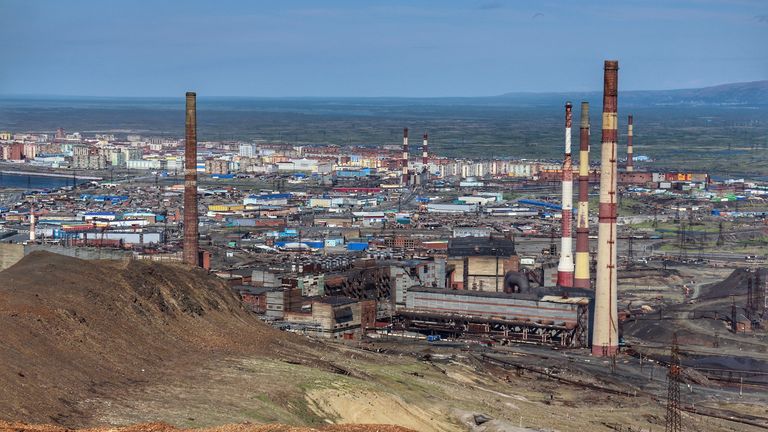
Vasily Ryabinin doesn't think much has changed, at least in ecological terms. He used to work for the local branch of the federal environmental watchdog, Rosprirodnadzor, but quit in June after exposing what he says was a failure to investigate properly the environmental impact of the gigantic diesel spill which poured into two Arctic rivers in late May.
At 21,000 tonnes, it was the largest industrial spill in the polar Arctic .
Despite the Kremlin declaring a federal emergency and sending a host of different agencies to participate in the clean-up, just last week Mr Ryabinin and activists from Greenpeace Russia found another area where technical water used in industrial processes was being pumped directly into the tundra from a nearby tailing pond. Russia's investigative committee has promised to investigate.
"The ecological situation here is so bad," Mr Ryabinin says.
"The latest constructions such as the tailing pond at the Talnack ore-processing plant were built exclusively by Nornickel chief executive Vladimir Potanin's team and supposedly in accordance with ecological standards, but on satellite images you can see that all the lakes in the vicinity have unnatural colours and obviously something has got into them."

Mining company Nornickel would disagree. It has admitted flagrant violations at the tailing pond and suspended staff it deems responsible at both the Talnack plant and at Norilsk Heat and Power plant no 3 where the diesel spill originated from.
On Thursday it appointed Andrey Bougrov, from its senior management board, to the newly-created role of senior vice president for environmental protection. It has a clear environmental strategy, provides regular updates on the status of the spill, and its Twitter feed is filled with climate-related alerts.
But what investors read is very different to the picture on the ground.

Norilsk used to be a closed city - one of dozens across the Soviet Union shut off to protect industrial secrets. Foreigners need special permissions approved by the Federal Security Service (FSB) to enter the region. It would take an invitation from Nornickel to make that happen and, for the past month since the spill, that has not been forthcoming.
Unlike in Soviet times, Russian citizens are now free to come and go. That's why our Sky News Moscow team were able to fly in and travel around the city, even if getting to the spill site was blocked. What they were able to film provides a snapshot of the immense challenge Russia faces in upgrading its Soviet-era industrial infrastructure, particularly at a time when climate change is melting the permafrost on which much of it was built.
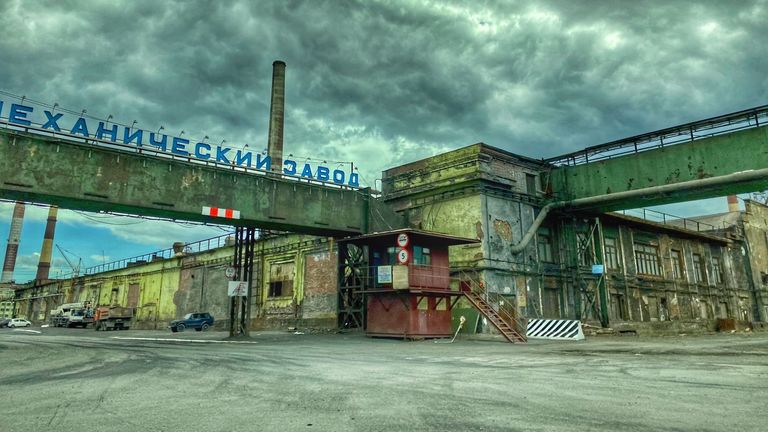
Just downwind from one of the rusting factories on the city outskirts is a huge expanse of dead land. The skeletal remains of trees stand forlorn against the howling Arctic winds. Sulphur dioxide poisoning has snuffed the life out of all that lived here. Norilsk is the world's worst emitter of sulphur dioxide by a substantial margin.
"For 80km south of here everything is dead," Mr Ryabinin says, "and for at least 10km in that direction too. Everything here depends on the wind."

Immediately after the spill, Mr Ryabinin filmed and took samples from the Daldykan river just a few kilometres from the fuel tank which had leaked. By that point the river was a churning mix of diesel and red sludge dredged up from the riverbed by the force of the leak. Norilsk's rivers have turned red before and the chemical residues have sunk to the bottom, killing all life there. Nothing has lived in those rivers for decades.
In his capacity as deputy head of the local environmental watchdog, Mr Ryabinin says he insisted that he be allowed to fly further north to check the levels of contamination in Lake Pyasino and beyond.
Nornickel at the time claimed the lake was untouched by the spill. Mr Ryabinin says his boss encouraged him to let things be.
"I can't be sure I would have found anything, but this sort of confrontation - making sure I didn't go there with a camera, let alone with bottles for taking samples, it was all very clear to me. It was the final straw."
Rosprirodnadzor refused to comment to Sky News on Mr Ryabinin's allegations or suggestions that the agency was working hand in hand with Nornickel.
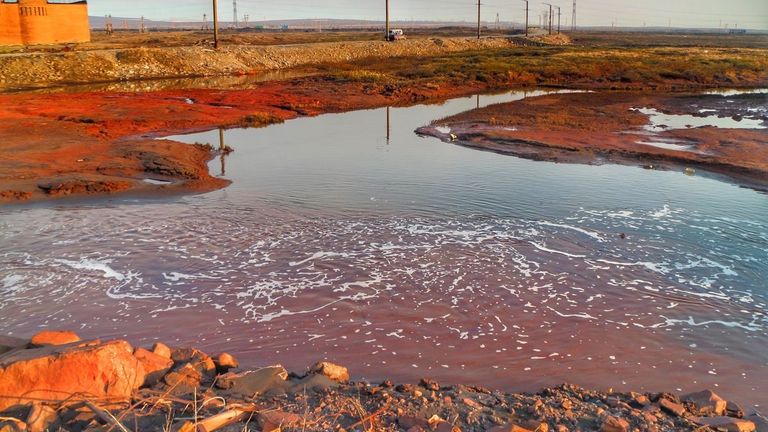
Georgy Kavanosyan is an environmental blogger with a healthy 37,000 following on YouTube. Shortly after the spill, he set out for Lake Pyasino and to the Pyasina River beyond to see how far the diesel had spread.
"We set out at night so that the Norilsk Nickel security wouldn't detect us. I say at night, but they've got polar nights there now, north of the Arctic Circle. So it's still light but it's quieter and we managed to go past all the cordons."
He is one of the few to have provided evidence that the diesel has in fact travelled far beyond where the company admits. Not just the 1,200km (745m) length of Lake Pyasino but into the river beyond.
He says his measurements indicated a volume of hydrocarbons dissolved in the water of between two and three times normal levels. He thinks after he published his findings on YouTube, the authorities' vigilance increased.
Greenpeace Russia have spent the last two weeks trying to obtain samples from Lake Pyasino and the surrounding area. They have faced difficulties getting around and flying their samples out for independent analysis.
They are now waiting for results from a laboratory in St Petersburg but say the samples remain valid technically for just four days after collection and that they weren't able to make that deadline due to the authorities' actively obstructing their work.

Elena Sakirko from Greenpeace Russia specialises in oil spills and says this has happened to her before. This time, a police helicopter flew to the hunter's hut where they were staying and confiscated the fuel for the boat they were using. Then a deputy for the Moscow city parliament tasked with bringing the samples back from Norilsk was forced to go back empty-handed.
"We were told at the airport we needed permission from the security department of Nornickel," Ms Sakirko says. "We asked them to show us some law or statement to prove that this was legal or what the basis for this was, but they haven't showed us anything and we still don't understand it."
Nornickel announced this week that the critical stage of the diesel spill is over. The company is now finalising dates for a press tour for foreign media and for other international environmentalists.
Mr Ryabinin thinks this should have happened weeks ago.
"If we don't let scientists come to the Arctic region to evaluate the impact of the accident, then in the future if anything similar happens, we won't know what to do."
A spokesperson for Nornickel said the company "is actively cooperating with the scientific community and will meticulously assess both the causes and effects of the accident."

Nornickel considers permafrost thawing to be the primary cause of the accident, but is waiting for the end of investigation before making a final statement, the spokesperson said.
They added that the company "accepts full responsibility for the incidents on its sites these past two months and holds itself accountable for any infrastructural deficits or poor decisions by personnel.
"The imperative is to do everything to clean up our sites, instil a stronger culture of transparency and safety in our workforce, and ensure that such situations do not occur in the future."

IMAGES
VIDEO
COMMENTS
Inside the Maze prison - the first public tours. 12 September 2011. The entrance to H-6 inside the former maximum security prison. By Natalie Lindo. BBC News. To some people it's the Maze, to ...
What is Maze Prison. Maze Prison was originally constructed in the early 1970s as a maximum-security facility designed to house paramilitary prisoners involved in the Northern Ireland conflict. It consisted of eight H-shaped cell blocks, known as H-Blocks, each with individual cells surrounding a central enclosed area.
Maze Long Kesh is a unique, iconic and strategically well located 347 acre location with the potential to become the catalyst for a wider, 1000 acre development. The site has a compelling and varied history, initially as a World War II airfield and then a military camp, detention centre and prison. The Maze Long Kesh story is unique and has ...
HM Prison Maze (previously Long Kesh Detention Centre, and known colloquially as the Maze or H-Blocks) was a prison in Northern Ireland that was used to house paramilitary prisoners during the Troubles from August 1971 to September 2000. On 15 October 1974 Irish Republican internees burned 21 of the compounds used to house the internees thereby destroying much of Long Kesh.
Documentation of an attempted escape from a compound within Maze and Long Kesh Prison, 6 November 1974. Taken from an album from the Royal Ulster Constabulary archive collection. ... Audio-described tours of Maze and Long Kesh The video guides below were created from footage recorded in the Maze and Long Kesh in 2007. The guides include audio ...
Maze Break (aka The Great Escape) maze prison and peace; Can you visit the labyrinth prison? A Brief History of the Labyrinth Prison. Her Majesty's Prison Labyrinth (formerly Long Kesh Detention Centre, colloquially known as The Labyrinth or H-Blocks) is located in the Labyrinth (a Belfast suburb) at Long Kesh, a former RAF base on the ...
By Gordon Adair. BBC News NI. Thirty-four years ago, a team of IRA inmates escaped from what was supposed to be the most secure prison in Europe. It was, and remains, the biggest jailbreak in UK ...
Table of contents. Maze Prison (nicknamed "Long Kesh") was one of the most terrible Northern Ireland prisons in the history of the island of Ireland. A symbol of British occupation, it was the place of detention for many republicans, loyalists and innocent Northern Irish victims of the conflict between Northern Ireland and the United Kingdom.
The Maze Prison escape (known to Irish republicans as the Great Escape) took place on 25 September 1983 in County Antrim, Northern Ireland. HM Prison Maze (also known as Long Kesh) was a maximum security prison considered to be one of the most escape-proof prisons in Europe. It held prisoners suspected of taking part in armed paramilitary campaigns during the Troubles, with separate wings for ...
'Her Majesty's Prison Maze (known colloquially as Maze Prison, The Maze, The H Blocks or Long Kesh) was a prison in Northern Ireland that was used to house paramilitary prisoners during the Troubles from mid-1971 to mid-2000.. It was situated in the former Royal Air Force station of Long Kesh, on the outskirts of Lisburn.This was in the townland of Maze, about nine miles (14 km) southwest Belfast.
Maze prison, prison located 10 miles (16 km) west of Belfast, N.Ire., that was a symbolic centre of the struggle between unionists and nationalists during the "Troubles" in Northern Ireland in the late 20th and early 21st centuries. Located on the site of a former Royal Air Force airfield, the
The first public tours of Maze Prison took place in 2011, and they are still available if you've got connections. The site is officially closed to the public. So, the answer to today's blog post question is technically, "no." However, if you know the right people in the British government, you might be able to get a strict, guided tour ...
For nearly thirty years, the Maze prison played a unique role in the conflict between loyalist paramilitary forces and republicans in Northern Ireland. Built in 1976 to house terrorist prisoners, the prison was the scene of violent protests, hunger strikes, mass escapes, and death. It was emptied in 1998 as part of the Good Friday Agreement.
Can You Visit Maze Prison? March 18, 2023. Coley. In 2021, Kenneth Branagh's movie "Belfast" hit cinemas across the United States. The film, which stars Jamie Dornan, Caitriona Balfe, and Judi Dench, is a coming-of-age drama set in Northern Ireland during a period known as "The Troubles," which lasted from the late 1960s to the late ...
An IRA cell in the Maze/Long Kesh prison site. Bobby Sands' deathbed there has become a place of pilgrimage for republicans and a source of souvenirs. Photograph : Niall Carson/PA Wire. Taking ...
The road signs and the buildings of the old Maze prison have proved far easier to erase than the vivid ... the 15-mile trip to Maze is likely to be included as an evocative finale to the tours.
H-Block Memorial. Timeline: March 1976: British government ends "special status" treatment for IRA prisoners. With the opening of the new H-Block prison complex at the Maze Prison, IRA and other Republican prisoners would be subjected to the same rules as "ordinary" criminals. September 1976: Kieran Nugent, the first IRA prisoner ...
Maze Prison. 6 years ago. Hello all, I am an American who will be visiting Belfast this winter for a few days. December 18th - 20th to be exact. I've always been interested in the history of the Troubles, and there are lots of places I plan on visiting. However, I would be very interested in seeing the Maze prison.
The Ohio State Reformatory, also known as the Mansfield Reformatory, was constructed between 1886 and 1910 to act as an 'intermediate penitentiary', or the half-way point between the Boys Industrial School and the Ohio Penitentiary.In the mid-1800s, the land was originally used as Civil War training grounds; in 1884, plans for the new prison were approved by the state.
Moscow Metro. The Moscow Metro Tour is included in most guided tours' itineraries. Opened in 1935, under Stalin's regime, the metro was not only meant to solve transport problems, but also was hailed as "a people's palace". Every station you will see during your Moscow metro tour looks like a palace room. There are bright paintings ...
Elektrostal , lit: Electric and Сталь , lit: Steel) is a city in Moscow Oblast, Russia, located 58 kilometers east of Moscow. Population: 155,196 ; 146,294 ...
While Moscow is beautiful above-ground, it's fascinating underground. On this tour you will visit two of Moscow's most interesting underground attractions: the beautifully decorated Metro system, and the Bunker 42 anti-nuclear facility. Your private guide will tell you all about the history of these places, and answer any questions you might have. You'll see a different side of Moscow on ...
Norilsk was built in Stalin's times by gulag prisoners. This gritty industrial city is a testament to their endurance both of the cruelty of Stalin's regime and of the harsh polar climate.